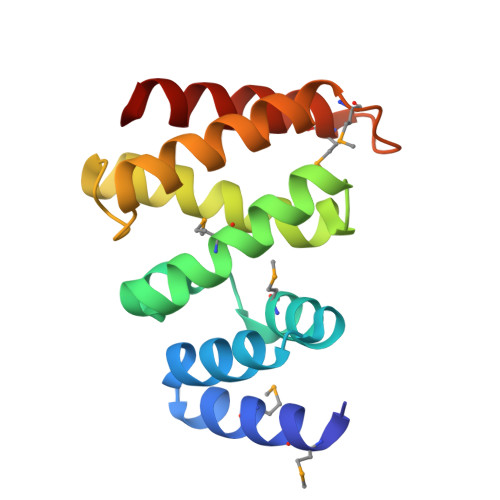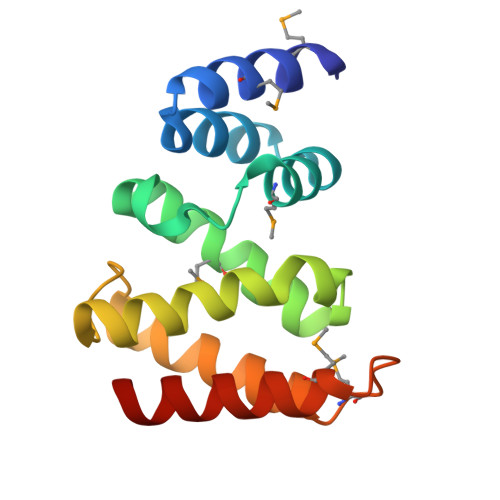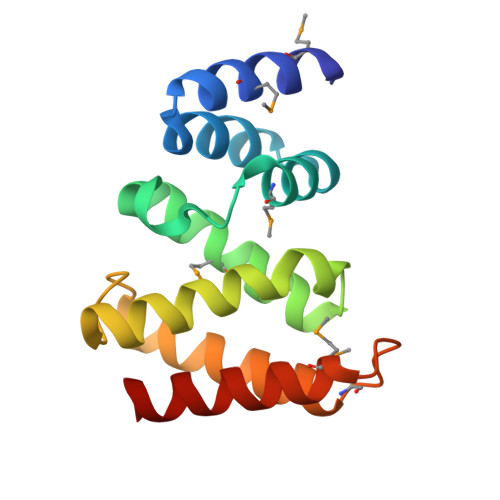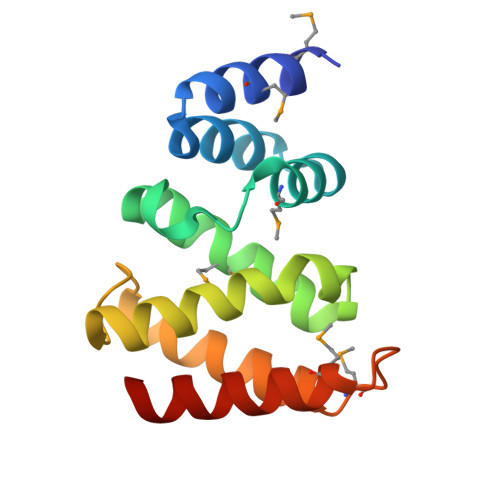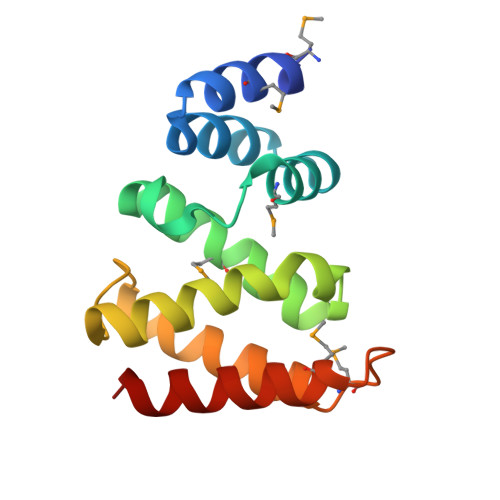Crystal structure of the C-terminal domain of the plant-specific microtubule-associated protein Spiral2.
Ohno, M., Higuchi, Y., Hayashi, I.(2023) Acta Crystallogr F Struct Biol Commun 79: 17-22
- PubMed: 36598352
- DOI: https://doi.org/10.1107/S2053230X22011815
- Primary Citation of Related Structures:
8HBR - PubMed Abstract:
Plant cells form microtubule arrays, called `cortical microtubules', beneath the plasma membrane which are critical for cell-wall organization and directional cell growth. Cortical microtubules are nucleated independently of centrosomes. Spiral2 is a land-plant-specific microtubule minus-end-targeting protein that stabilizes the minus ends by inhibiting depolymerization of the filament. Spiral2 possesses an N-terminal microtubule-binding domain and a conserved C-terminal domain whose function is unknown. In this study, the crystal structure of the conserved C-terminal domain of Spiral2 was determined using the single-wavelength anomalous dispersion method. Refinement of the model to a resolution of 2.2 Å revealed a helix-turn-helix fold with seven α-helices. The protein crystallized as a dimer, but SEC-MALS analysis showed the protein to be monomeric. A structural homology search revealed that the protein has similarity to the C-terminal domain of the katanin regulatory subunit p80. The structure presented here suggests that the C-terminal domain of Spiral2 represents a new class of microtubule dynamics modulator across the kingdom.
Organizational Affiliation:
Department of Medical Life Science, Yokohama City University, 1-7-29 Suehiro, Tsurumi, Yokohama, Kanagawa 230-0045, Japan.










